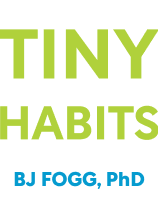

This article is an excerpt from the Shortform book guide to "Tiny Habits" by BJ Fogg. Shortform has the world's best summaries and analyses of books you should be reading.
Like this article? Sign up for a free trial here .
What is the Ability Chain from Tiny Habits? What are the five factors for success?
When trying to form a new habit, there are three components: motivation, ability, and prompt. The ability component can be thought of as a chain with five links. or the ability chain. These five links, or the five factors for success, are time, money, physical effort, mental effort, and how easy it is to incorporate the habit into your routine.
Keep reading to learn more about the ability chain and its five links.
Five Factors for Success
Before we can jump into a discussion about the Ability Chain and the five factors for success, we have to quickly review the Fogg Behavior Model. The Fogg Behavior Model is a simple formula that lets you pick apart the components of any particular behavior. This formula is B = MAP, where B is Behavior, M is Motivation, A is Ability, and P is Prompt. A behavior only happens when all three MAP variables are present at the same time.
Let’s look at each of these components in turn:
- Motivation is less important than most of us think. It’s unreliable, it’s hard to budge, and some of our motivations are unconscious or conflict with one another. On top of that, motivation can be especially difficult to muster when we’re stressed.
- Ability is how easy or difficult it is for us to do the behavior. We can work with Ability in two ways: by improving our own skills, or by making the behavior easier (the central method in Tiny Habits).
- The Prompt is your reminder to do the behavior. Without the Prompt, it doesn’t matter how high your Ability and Motivation are—the behavior won’t happen.
This article will focus on the Ability portion of the equation.
The Ability Chain
You can visualize the Ability component in B = MAP as a chain with five links: time, money, physical effort, mental effort, and compatibility with existing routines. Those are the five factors for success and, as with all chains, the Ability Chain is only as strong as its weakest link.
To target Ability effectively, we use two questions: a discovery question and a breakthrough question. The discovery question diagnoses the weak link. The breakthrough question tells us how to strengthen it.
Diagnosing the Weak Ability Chain Link
The discovery question is: What factor making this behavior difficult?
“Difficult” doesn’t have to mean very difficult—it refers to any amount of difficulty that is stopping you from doing the behavior.
Often our perception of the difficulty is more important than the actual difficulty of an activity.
We can break down the discovery question into the five factors for success:
- Do I have enough time to do this?
- Do I have enough money to do this?
- Does this require a lot of physical effort?
- Does this require a lot of mental effort?
- Can I incorporate this easily into my daily routine?
Let’s say you want to start eating blueberries as a daily snack.
Time. Eating blueberries doesn’t take a lot of time.
Money. Fresh blueberries can be quite expensive.
Physical effort. Eating blueberries doesn’t require much physical effort.
Mental effort. Eating blueberries doesn’t require mental effort.
Daily routine. It’s easy to incorporate eating blueberries into most daily routines.
The weak factor for this habit seems to be money. Because fresh blueberries are expensive, perhaps you don’t buy enough when you go to the store to be able to eat them every day.
Because money is the weakest factor on your road to success, this should be the target of your solution. Buying blueberries frozen or in bulk might be the trick to establishing this habit in your life.
Strengthening the Weak Ability Chain Link
Once we’ve diagnosed the problem, we need to generate solutions.
The breakthrough question is: How can I make this easier? We can use the PAC acronym for this: Solutions can be Person-based, Action-based, or Context-based.
Person. Change something about yourself to make the activity easier. This means “skilling up”: increasing your skills to make the activity easier in the future. You can skill up through:
- Watching YouTube videos (there’s a video for pretty much everything)
- Reading a book
- Taking a class
- Asking someone to teach or show you how to improve
Skilling up is most natural during a motivation surge. Take advantage of motivation surges to skill up—this investment will make a difference later, when your motivation is low.
Action. Change the action itself to make it easier (more on this in a moment).
Context. Change something about your environment to make the activity easier. You can work with context through:
- Investing in a helpful tool (such as better dental floss, a salad spinner, or good walking shoes)
- Rearranging your environment (store something where you can reach it, reorganize the fridge)
Manipulating the action itself is a key strategy in Tiny Habits. If you shrink the behavior enough, you can do it no matter how low your motivation sinks. There are two ways to approach making behaviors tiny:
1. Starter step. This is the very first “baby step” towards the behavior you want to cultivate. It can create a surprising amount of momentum. For example:
- Desired behavior: Walk for 30 minutes daily. Starter step: Put on your walking shoes.
- Desired behavior: Tidy up after meals. Starter step: Stack the plates.
- Desired behavior: Cook yourself breakfast. Starter step: Turn on the stove burner.
2. Scaling back. This is a pared-down version of the behavior you want. For example:
- Desired behavior: Walk for 30 minutes daily. Scaled-back version: Walk to the front gate.
- Desired behavior: Tidy up after meals. Scaled-back version: Put dishes in the sink.
- Desired behavior: Cook yourself a healthy breakfast. Scaled-back version: Make instant microwave porridge.
In all cases, it’s important to keep the target behavior tiny. Don’t get excited and make the baseline behavior more ambitious—especially not early on. If you cooked yourself a gourmet breakfast yesterday, it’s perfectly fine to just turn on the burner today. The most important thing is to keep the tiny habit alive.

———End of Preview———
Like what you just read? Read the rest of the world's best book summary and analysis of BJ Fogg's "Tiny Habits" at Shortform .
Here's what you'll find in our full Tiny Habits summary :
- How you can successfully create new habits that stick
- Why you don't need motivation, just science
- Why even flossing one tooth should be considered a victory






